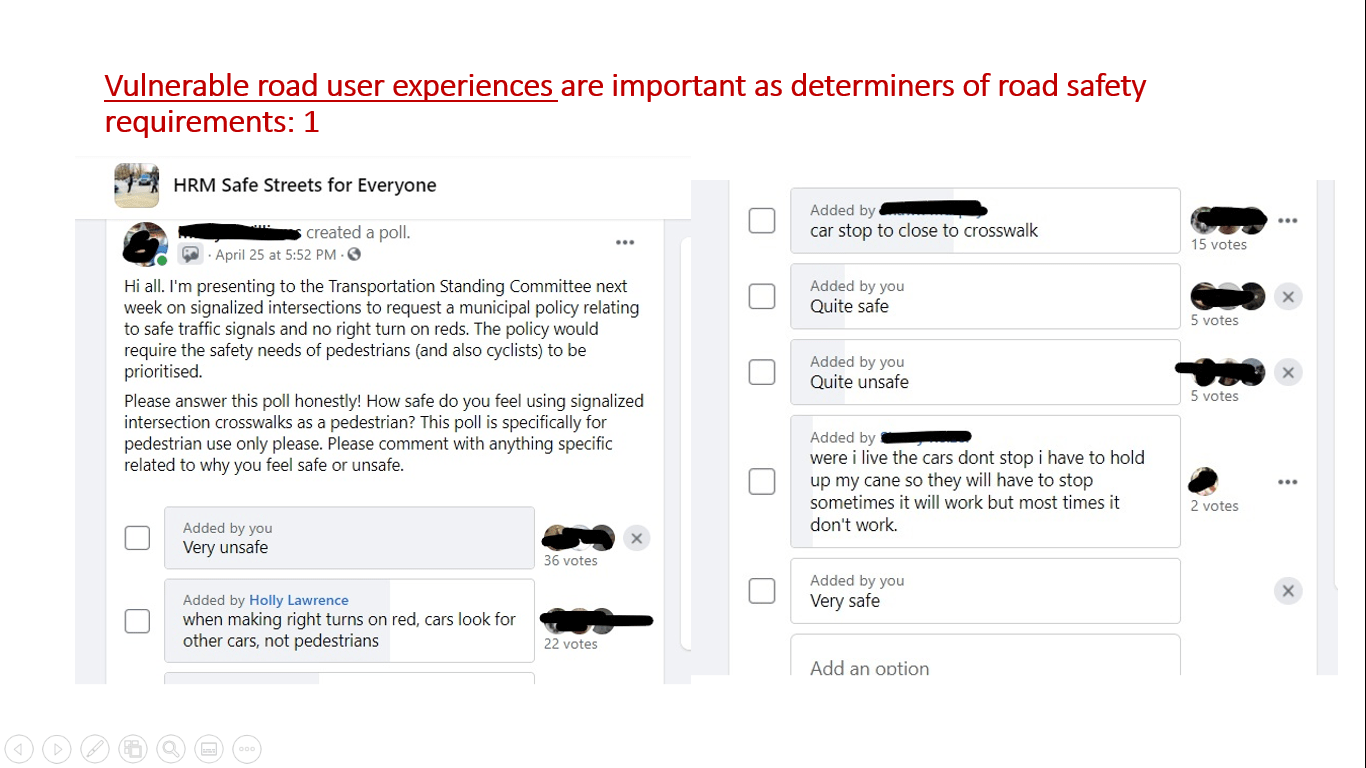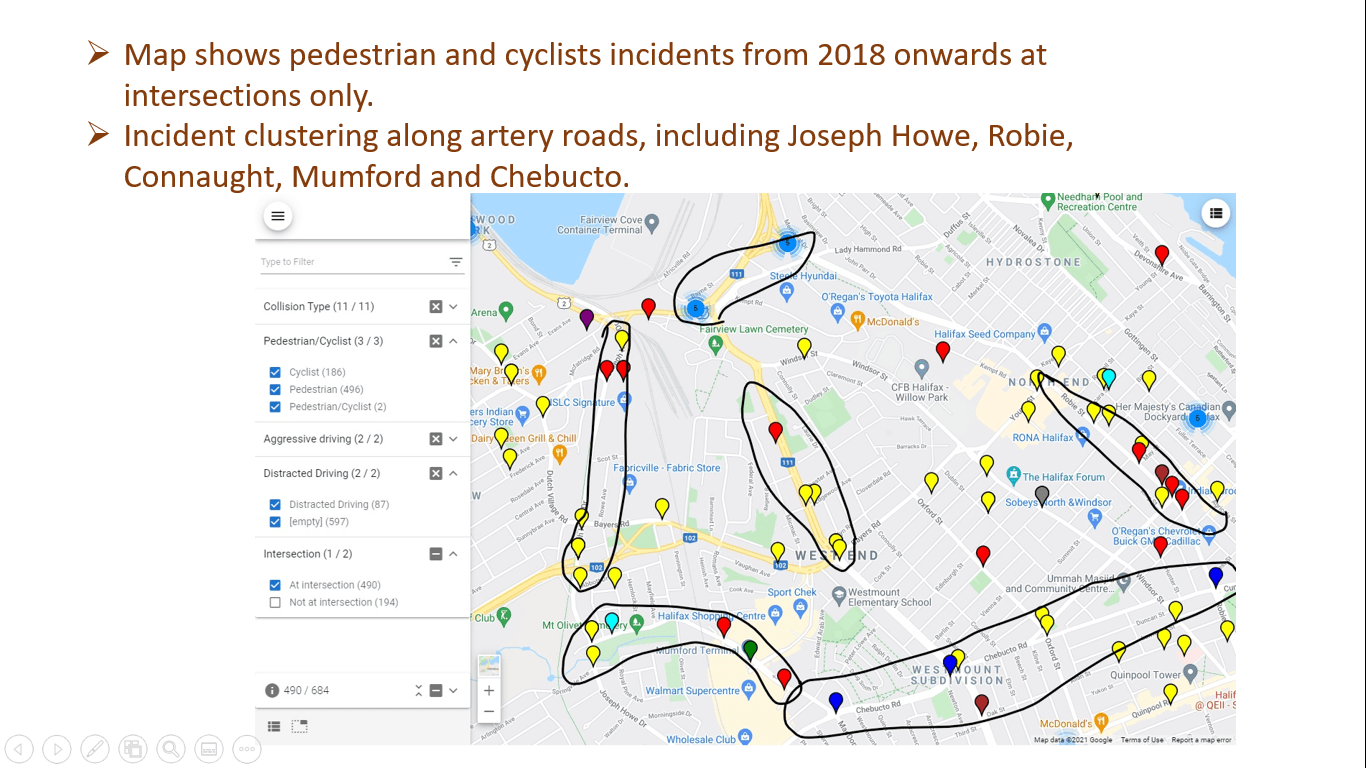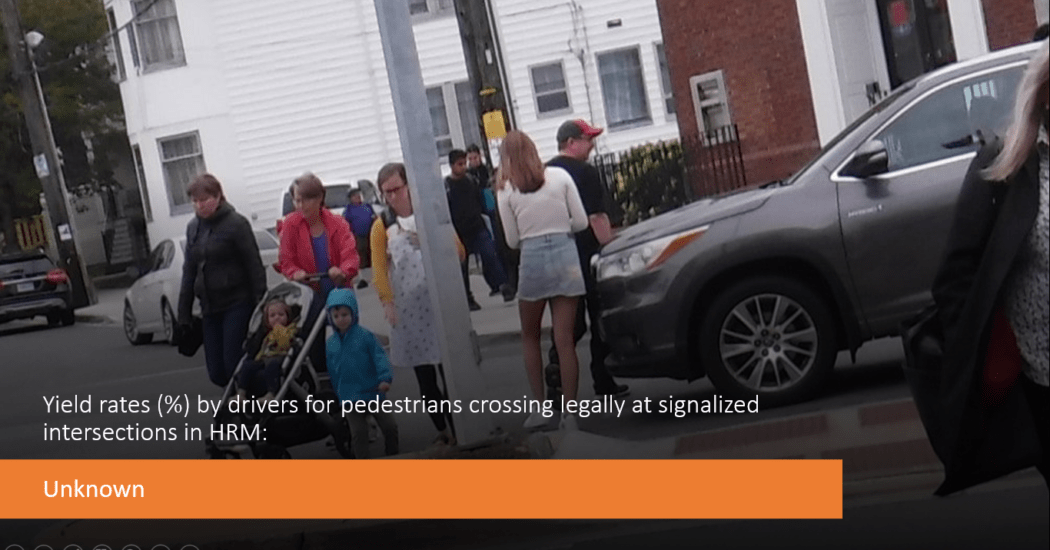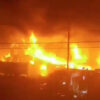
KJIPUKTUK (Halifax) – On Wednesday, a 58 year-old man using a marked crosswalk at the Forest Hills Parkway/Main Street signalized intersection in Dartmouth was struck by a 19 year-old female driver heading south-bound on Forest Hills Parkway and turning right onto Main Street.
The driver was issued a Summary Offence ticket for failing to yield to a pedestrian on a crosswalk, say the RCMP. The pedestrian was taken to hospital with non-life threatening injuries. A number of firetrucks and ambulances attended the scene, as shown in the incident video footage from CTV’s Carl Pomeroy.
Local pedestrians commenting on twitter have some observations about this intersection.The language used absolutely reflects the level of danger, anger and difficulty resulting from any dangerous location that wholly lacks pedestrian safety infrastructure.
I used to live in the housing co-op there. To get groceries I used to have to cross that intersection with two toddlers in tow. It’s a fucking nightmare. And the drivers are terrible all along the parkway. I get a pain in my chest just remembering leaving that house for anything
There are right turning lanes so at least you only have to worry about one direction of attacks at once there.
But left turning cars are a problem for the same reason the whole intersection is: everybody is in the biggest hurry and it’s just big wide fast highway all four ways. – @neluunaa
It connects 4 major arteries. FH Pkwy, FH extension, HWY 107 and Main St. Once traffic starts flowing it’s a festival of blowing/turning left on reds. Even slow flow, you can easily do 60.
Also rush hour lasts 2 hours at most. The rest of the day it’s basically a race track.– @brunobersano
I sometimes go from corner to corner (Tims to Sobeys) would never walk it. Fucking deathtrap. It’s basically an intersection of two highways. – @LandOfSticks
As we all know, pedestrians struck on crosswalks is a weekly, often daily occurrence. In the Fall without the infrastructure they require to be safe from moving vehicles, pedestrian incidents on crosswalks will inevitably increase, as they always do.
Forest Hills Parkway/Main Street intersection is a perfect example of an intersection wholly built for vehicular traffic flow. The slip lane where I understand the 58 year-old man was struck has no pedestrian safety infrastructure, just painted lines and a yield sign.
Slip lanes from high speed artery roads are dangerous for pedestrians because they are designed for unimpeded vehicular movement, say the United States Federal Highways Agency.
Similar to right turns on a green or red light at signalized intersections, drivers are not thinking about pedestrians when they use slip lanes – they are looking to their left for oncoming traffic so they can merge with traffic, often with the aim of not coming to a full stop. They could and do entirely miss a pedestrian crossing right in front of them.
Despite the well known and national transportation agency affirmed dangers of slip lanes, they are not being adapted for safe use by pedestrians. In other jurisdictions including Seattle they are being adapted or closed off by varied methodologies.
City authorities in Adelaide, Australia, simply decided by policy to remove slip lanes after ascertaining they are unsafe for pedestrians.
Traffic staff recently said they likely receive more complaints about Forest Hills Parkway/Main Street than any other intersection. They say it is operating at maximum capacity, and there are very few pedestrians. Staff specifically pointed to excessive congestion leading to road safety issues for vulnerable road users, which they said they see time and time again.
It is true that pedestrians are often struck at peak hours on wide signalized intersections.
But this is not down to excessive congestion per se. It is due to illegal or dangerous driving, vehicle/pedestrian conflicts due to current traffic light programming and right on red laws, and unsafe wide crosswalks which lack any pedestrian safety infrastructure whatsoever.
Often those safety problems for pedestrians are more severe when there is lighter traffic because drivers move faster and consequently see less around them. In the United States, another increase in pedestrian fatalities during 2020 has been linked specifically to less traffic and congestion.
Although the fumes are unpleasant, I don’t feel unsafe walking by and through slower moving or standstill traffic. In the United Kingdom where I have walked for 40 years, congestion is notably far worse. Car use is rendered completely impractical and virtually impossible at peak hours as a means of getting to and from an urban core. However, pedestrians are not regularly struck while legally using crosswalks, as they are in Halifax.
The extraordinary and unacceptable danger experienced by pedestrians at signalized intersections is not due to congestion. It is due to multiple lanes, traffic-light programmed vehicle/pedestrian conflicts, right turn on reds, dangerous wide slip lanes and crosswalks, and drivers moving at unsafe speeds or focusing wholly on their own movement and avoiding conflict with other vehicles.
Pedestrians who use unsafe crosswalks at intersections do not need an engineering qualification to understand what is dangerous for them and why. Recently when I asked regular pedestrians on the HRM Safe Streets for Everyone Facebook group about the level of safety at signalized intersections, they identified the level of danger and specific safety issues for them accurately:

Their observations and experiences match recent pedestrian and cyclist incident data:

Signalized intersections connecting artery roads are not a suitable location for prioritizing traffic flow and ignoring obvious and essential pedestrian safety infrastructure requirements.
Maximizing vehicle flow optimization at all times does not result in safety for pedestrians. Neither are the yield laws adequate alone at multiple lane crosswalks with no pedestrian safety infrastructure.
In many cases, especially on wide slip lanes and traffic lights and law which invite conflict between vehicles and vulnerable road users, optimisation for vehicular traffic flow results in pedestrian safety considerably worsening.
Halifax decision-makers must wake up to a very obvious reality – vulnerable road user safety infrastructure at the most dangerous locations is essential, not optional.
Pedestrians require completely different but very necessary infrastructure to the current choices associated with vehicular traffic flow optimization. Yield rates by drivers at signalized intersections must be ascertained, and resulting interventions prioritized accordingly.

Pedestrian safety infrastructure is not a suitable long term aim, nor does it require the conversion of intersections to roundabouts. Other jurisdictions have implemented traffic signals that prevent drivers from turning over the crosswalk when pedestrians are crossing legally, and adapting wide slip lanes with inexpensive interventions.
A pedestrian safety action plan identifying suitable infrastructure interventions and a timescale for completing them is long overdue. Please ask your councillor about the lack of progress with the pedestrian safety related action requirements clearly set out in our road safety framework, explained in my previous and recent article here. I’d be glad to hear any response – please use the comment facility or post to HRM Safe Streets for Everyone.
If you walk, cycle or use a wheelchair and are affected by road safety issues, please join HRM Safe Streets for Everyone. If your local crosswalk needs a crosswalk flag, please contact the Crosswalk Safety Society. Please remember to report issues affecting your safety to our municipal authorities using the 311 service.
Check out our new community calendar!
With a special thanks to our generous donors who make publication of the Nova Scotia Advocate possible.
Subscribe to the Nova Scotia Advocate weekly digest and never miss an article again. It’s free!




I have a solution to this which is far less intrusive and expensive than options available, which have been the complaints from the city as to why they don’t do something about the issue. The city knows about my idea, as they destroyed the prototype for it last summer. Wish I could get some traction with it, as I believe it would all but eliminate these events in straight away crosswalks.